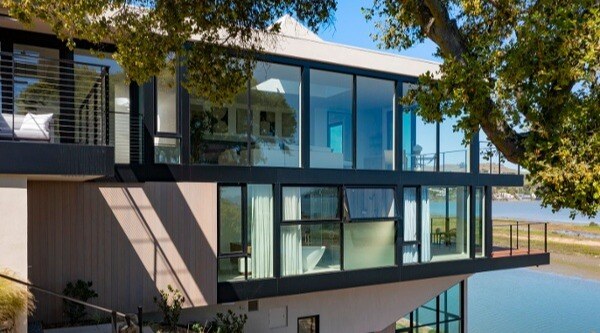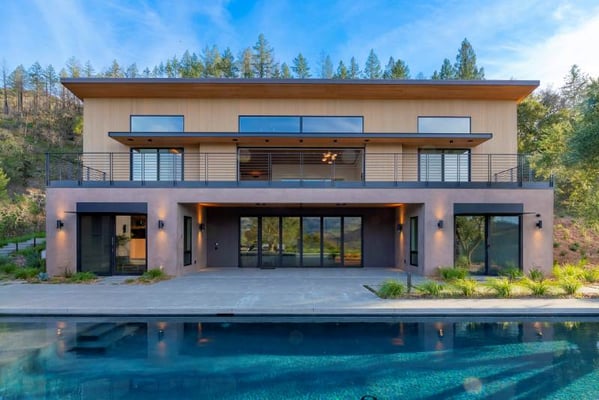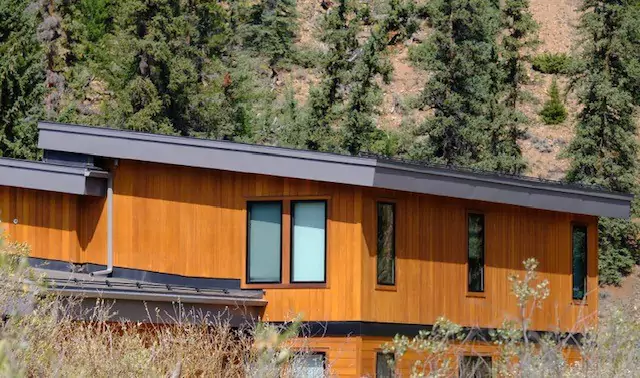
Western Red Cedar wood siding is beautiful and absolutely adds curb appeal. But it is also costly and hard to find. An alternative to cedar siding that's gaining popularity? Thermally Modified Wood, a smart choice worth a closer look.
In this article:
- What Is Thermally Modified Hem-Fir Wood Siding?
- A Better Alternative to Cedar?
- Cost-Effective Advantages
- Fire Rating
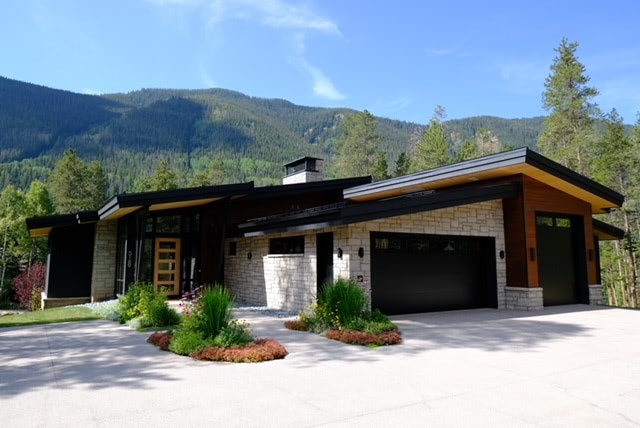
The front (above) and back (below) views of this contemporary home show off thermally modified Hem-Fir siding installed as a vertical rainscreen siding. Contrasts beautifully with the stone entryway on the front exterior.
The steeply rising cost and low availability of clear Western Red Cedar has builders and homeowners searching for an alternative wood that looks and performs like – or better than – Cedar.
If you are among them, your siding “must have” list probably looks like this:
- Impressive beauty and curb appeal
- More affordable
- Insect and decay resistant
- Very good stability
- Durable for decades
- Gives you a choice of finishing options
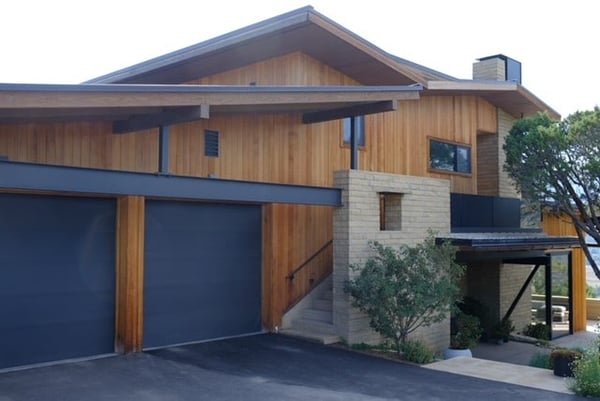
What Is Thermally Modified Hem-Fir Wood?
When a softwood like Hem-Fir (Hemlock) wood has been thermally modified, that means it has undergone a patented process using heat and steam in a pressure kiln. This process uses no chemicals or additives and is environmentally friendly.
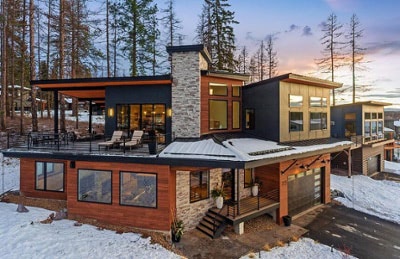 Knowing its proven resistance to harsh weather, thermally modified Hem-Fir was chosen for the exterior of this gorgeous ski lodge (and the rooftop decking)!
Knowing its proven resistance to harsh weather, thermally modified Hem-Fir was chosen for the exterior of this gorgeous ski lodge (and the rooftop decking)!
Is It a Better Alternative for My Cedar Siding Project?
Quite possibly. After all, thermally modified wood siding is real wood. If you are considering Cedar and alternatives, you probably prefer the look and feel of wood and appreciate the natural beauty and character.
Thermally modified wood can give your project all of that, too, plus more.
Mataverde Thermawood Hem-Fir is the perfect example. Here’s what it can bring to your exterior siding project:
- Beautiful dark brown colors deepened by the heating process that add curb appeal.
- A darker textured grain that offers interesting patterns and rustic flair.
- Very good resistance to insect, rot, mold, and decay damage
- Very good stability to prevent warping, checking, or splitting.
- Very good durability to resist checking, splitting, and cracking.
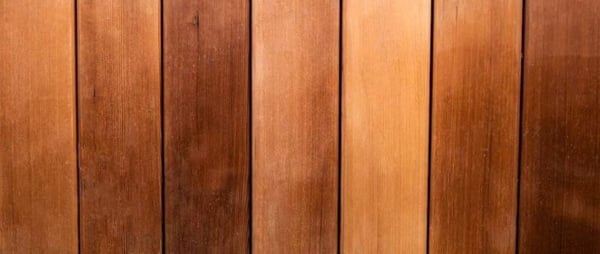 The heat-darkened color range of Thermawood Hem-Fir stands up easily to comparisons to Cedar.
The heat-darkened color range of Thermawood Hem-Fir stands up easily to comparisons to Cedar.
RELATED: Check out the Thermawood Hem-Fir Siding Project Picture Gallery
Advantages of Thermally Modified Wood over Cedar
Cost Effectiveness:
Thermally modified Hem-Fir is a lower upfront material investment than Western Red Cedar by a large margin.
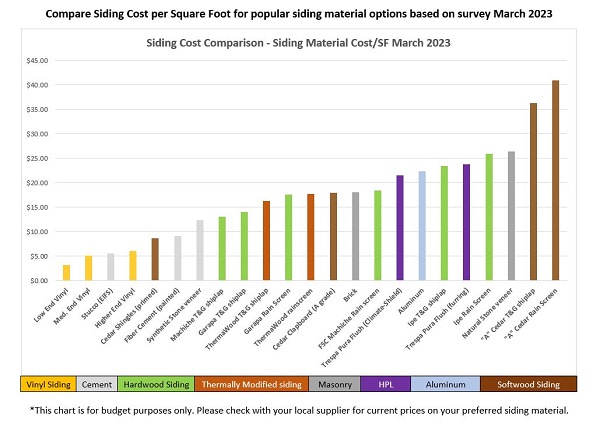 The latest pricing comparison of siding materials shows Cedar wood siding on a sharp rise in cost. Thermawood Hem-Fir lands in the middle range and is still a premium siding option.
The latest pricing comparison of siding materials shows Cedar wood siding on a sharp rise in cost. Thermawood Hem-Fir lands in the middle range and is still a premium siding option.
Availability:
Thermally Modified Hem-Fir is faster and easier to obtain than Cedar, which can takes weeks to months to arrive for your project.
Aesthetics:
Thermally modified wood is real wood. Some people prefer the look and feel of wood and appreciate the natural beauty and character it adds to their home exterior.
Modified Hem-Fir wood has its own unique, rich color and texture. The modification process gives it a darker, more rustic look that many people find appealing.
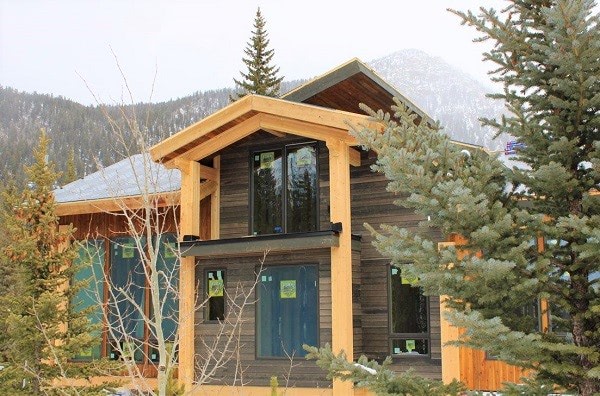 Thermally Modified Hem-Fir siding looks right at home on this mountain retreat.
Thermally Modified Hem-Fir siding looks right at home on this mountain retreat.
Various shades of golden-brown to dark chocolate-brown characterize its gorgeous colors. Its distinctive texture adds depth. Each piece of siding has its own individual character.
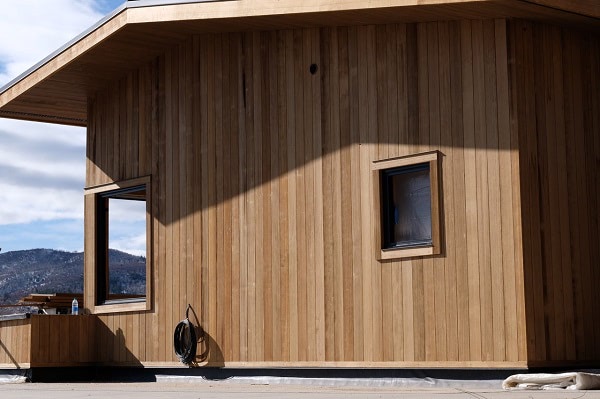
Thermawood Hem-Fir give a natural, rustic feel to this exterior. The siding was installed both vertically for added interest, using the Climate-Shield wood rainscreen system.
RELATED: Comparing Western Red Cedar with Thermally Modified Hemlock Siding
Learn how a Climate-Shield Wood Rainscreen Siding System can increase the cost-effectiveness
of your Thermawood Hem-Fir Siding even more. Download the PDF now.
Like Cedar, it has a rustic feel. But unlike Cedar it is readily available, and in clear wood (without lots of knots).
Prefer colors? Finish your thermally modified wood with an oil-based paint or stain like you would with Cedar.
If you love that aged gray Cedar siding look, have no fear! Thermally modified wood will also weather naturally to a soft gray patina.
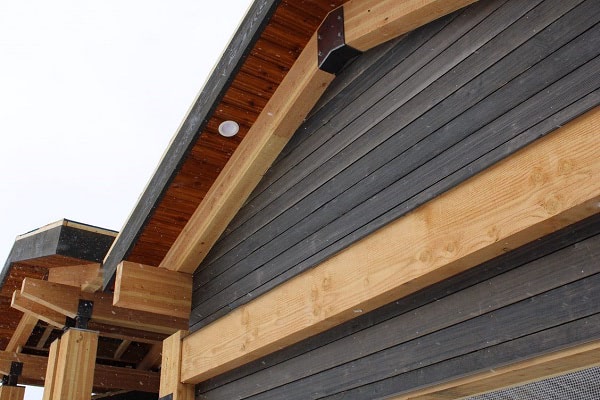 Thermally modified Hem-Fir can be stained with oil-based products, like this dark stain contrasted with its natural tones on this home exterior (with snow flurries). This house project used Tongue and Groove siding horizontally.
Thermally modified Hem-Fir can be stained with oil-based products, like this dark stain contrasted with its natural tones on this home exterior (with snow flurries). This house project used Tongue and Groove siding horizontally.
Sustainability:
Mataverde Thermally Modified Wood Siding is sourced from responsibly managed forests, ensuring sustainability and eco-friendliness. Additionally, thermal modifications uses only heat and steam, without chemicals or preservatives, so it’s environmentally friendly.
Low maintenance:
There are no maintenance-free sidings, but Thermal modification makes a softwood like Hemlock as close as you can get. The improved insect and rot resistance, even mold resistance, keep your maintenance time and labor to a minimum.
Like Cedar, you can paint or stain Hem-Fir with oil-based finishes in any color you choose. Or keep the natural wood tones with an oil-based UV protectant.
If allowed to gray, it will still require less maintenance than weathered Cedar. Just continue to apply an oil-based protectant as needed.
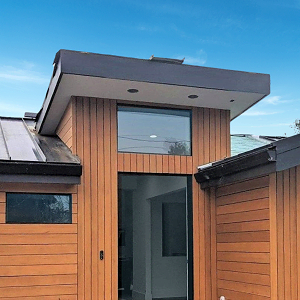
Thermally modified Hem-Fir surrounds this entryway, using rainscreen siding horizontally and vertically, for a warm welcome home.
RELATED: Technical Comparison of Western Red Cedar Characteristics to Thermawood Hem-Fir
Durability:
The heat treatment process makes modified Hem-Fir more durable and resistant to weathering than non-modified softwoods.
This makes it an excellent choice for outdoor use even in areas with harsh climates or high humidity. It will resist time, age, wear, and tear with minimal upkeep.
It is very resistant to scratching, denting, and splitting.
The heat process ‘cooks’ the natural sugars out of the wood, making it unappetizing to insects, giving it a natural insect damage resistance like Cedar.
These factors mean that your thermally modified wood siding will last for decades without frequent maintenance and repairs.
Ready to learn more about installing Thermawood Hem-Fir as a wood rainscreen siding?
See more information and project photos in the Ultimate Guide to Rainscreen Siding PDF, here.
Stability:
The steam component of the thermal modification prevents the brittleness of standard kiln drying alone, resisting splitting and damage.
It also creates a very stable siding material with less expansion and contraction than non-modified Hem-Fir. In short, it stays put.
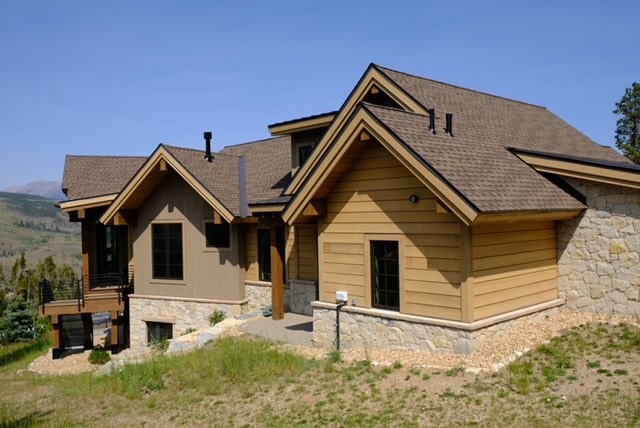 Side view of a residential siding project using Thermawood Hem-Fir as an accent
Side view of a residential siding project using Thermawood Hem-Fir as an accent
Fire Rated:
Thermawood Hem-Fir is also available in Thermawood FR, treated to be fire resistant. Thermawood FR is fire-rated for use in wildfire-prone areas.
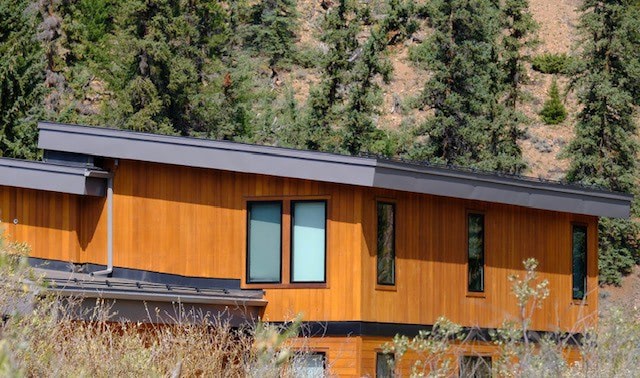
Mataverde Thermawood FR (fire rated) siding, shown here, is available when homeowners request it and building codes require it.
Overall, thermally modified wood material provides a durable, aesthetically pleasing, sustainable, minimal maintenance, and cost-effective solution for those looking to enhance the appearance and longevity of their house exterior.
If this blog has you thinking about thermally modified wood siding and you have questions, feel free to contact our team for answers. They can also help with wood siding samples or pricing to help you get started.

Related Posts
